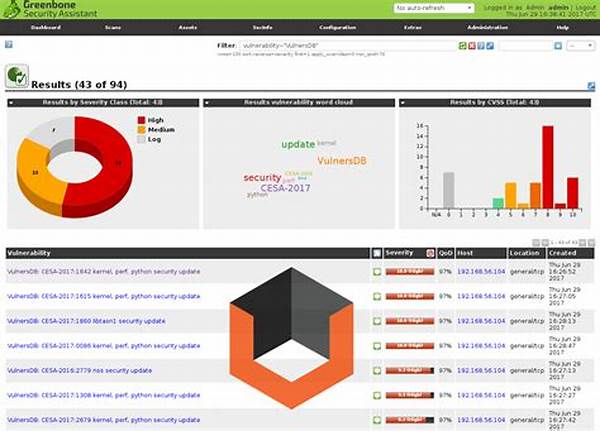The digital era has introduced an unprecedented level of connectivity and convenience. However, lurking beneath the surface of every technological advancement are vulnerabilities that can be exploited by malicious actors. As organizations strive to secure their infrastructures, the spotlight shines on vulnerability management processes—identifying, assessing, and mitigating vulnerabilities to protect systems from threats. This is where open-source vulnerability management tools become crucial, providing an effective, budget-friendly solution for businesses of all sizes. These tools offer organizations the agility to stay ahead of threats without overstretching their budgets, empowering them with transparency, flexibility, and a community-backed intelligence network.
Imagine a scenario where you are running a midsize enterprise. You wake up one morning only to discover your systems have been compromised, customer data leaked, reputation damaged, and a significant financial setback incurred. If only you had invested in a solid vulnerability management strategy using robust open-source tools, this scenario could have been avoided. Let’s explore why these tools should be at the forefront of your cybersecurity investment strategy.
Open-source tools cater to a wide range of organizational needs by offering a flexible and cost-effective approach. The beauty of these tools lies not only in their affordability but also in the vibrant communities that contribute to their development. These communities enhance the tools’ capabilities through collective intelligence and continuous updates. Furthermore, because they are open-source, these tools can be customized to meet the unique demands of your organization, offering the adaptability that proprietary software often lacks.
Why You Should Consider Open-Source Vulnerability Management Tools
Open-source vulnerability management tools are the unsung heroes in cybersecurity. They allow organizations to harness community-driven innovation, ensuring that the software is reliable and constantly improving. With a plethora of documentation and community support, onboarding these tools becomes a breeze. For small to medium-sized businesses striving to balance robust security with budget constraints, these tools are the perfect match.
Utilizing open-source solutions not only offers flexibility but also fosters a culture of collaboration. Businesses can benefit from diverse insights and best practices shared across global user communities. Moreover, since the source code is open, security teams can vet the code for vulnerabilities, ensuring that there are no hidden backdoors. This transparency builds trust and makes open-source tools a preferred choice among those wary of vendor lock-in.
Managing vulnerabilities is an ongoing process, crucial for defending against cyber threats. Open-source vulnerability management tools play a pivotal role in identifying weaknesses before attackers exploit them. According to a recent study, over 60% of data breaches were linked to known vulnerabilities that had not been patched. This startling statistic underscores the urgency and importance of effective vulnerability management.
From scanning networks for weak spots to managing patch deployments, these tools guide organizations in bolstering their cybersecurity posture. They help in prioritizing vulnerabilities based on potential threat levels, enabling teams to focus their attention where it is needed most. What’s more, the ability to integrate seamlessly with other security tools means organizations can build a cohesive defense mechanism tailored to their specific requirements.
Community and Customizability: The Strength of Open-Source
One of the greatest strengths of open-source vulnerability management tools is the vast collaborative community behind them. Forums and repositories often buzz with activity, as users share fixes, enhancements, and creative workarounds. This collective pool of wisdom accelerates innovation and ensures that these tools keep pace with evolving security challenges. Additionally, their customizable nature allows businesses to tweak and extend functionalities to align with their operational workflows.
These tools embrace transparency, offering the flexibility larger organizations crave and the efficiencies smaller businesses need. Leveraging open-source solutions can be akin to plugging into a powerhouse of shared expertise—a valuable asset in a complex cybersecurity battlefield. As organizations navigate the nuances of vulnerability management, open-source tools offer both a guiding hand and a safety net, ensuring no stone is left unturned when it comes to securing digital fortresses.
Advantages of Open-Source Vulnerability Management
Below are several compelling reasons why adopting open-source vulnerability management tools can be an effective strategy for your organization:
The rise of open-source vulnerability management tools signifies a shift towards cost-effective, adaptable, and community-driven solutions. They allow businesses to maintain a robust security posture without the financial strain of high licensing fees or vendor lock-in. As these tools continue to evolve with the support of their communities, they present a competitive advantage to any organization willing to embrace their potential.
Goals of Implementing Open-Source Vulnerability Management Tools
By embracing open-source vulnerability management tools, organizations can not only secure their systems more effectively but also become part of a global community dedicated to improved cybersecurity practices and solutions.

